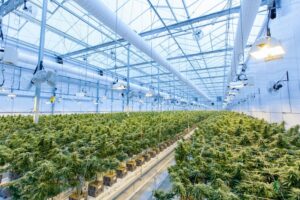The landscape of medical marijuana has evolved, offering patients alternative avenues for accessing therapeutic cannabis. One significant aspect of this evolution is the ability of individuals to cultivate their own medical marijuana at home.
In states like Florida, where medical marijuana is legal, home cultivation has become a topic of interest, blending the science of horticulture with the art of cultivating a medicinal plant. This article delves into the intricacies of growing medical marijuana at home in Florida, exploring the science behind cultivation, the regulatory framework in the state, and the personal artistry involved in nurturing this powerful medicinal herb.
Can You Grow Medical Marijuana at Home in Florida?
Florida allows qualified patients to access medical marijuana, but home cultivation is generally not permitted. The Florida Department of Health governs Florida’s medical marijuana program, and it includes regulations regarding the cultivation and use of medical marijuana.
In Florida, licensed Medical Marijuana Treatment Centers (MMTCs) are authorized to cultivate, process, and dispense medical marijuana to qualified patients. Home cultivation is not explicitly allowed under the current regulations.
It’s important to note that laws and regulations can change, and it’s advisable to check with the Florida Department of Health or other relevant state authorities for the most up-to-date information regarding medical marijuana regulations in the state. Additionally, consulting with a healthcare professional and obtaining a recommendation from a qualified physician are typically required steps for patients seeking access to medical marijuana in Florida.
Home Cultivation of Medical Marijuana: An Overview
Home cultivation of medical marijuana involves the process of growing cannabis plants for personal medicinal use. It empowers patients to take an active role in their treatment, providing a level of control over the cultivation process and the specific strains of cannabis they consume. In Florida, the ability to cultivate medical marijuana at home comes with specific guidelines and regulations outlined by the state.

Image by Richard T on Unsplash
Growing Medical Cannabis in Florida: Understanding the Basics
Successful cultivation of medical cannabis in Florida begins with understanding the basics of growing marijuana plants. This includes factors such as choosing the correct strains, providing suitable growing conditions, and implementing effective cultivation techniques. From selecting seeds or clones to mastering the vegetative and flowering stages, cultivating medical cannabis requires a foundation in horticulture.
Once you have ironed out all the details in terms of what you’ll need and how you can do it, you can begin to explore the options surrounding growing medical marijuana at home in Florida.
Cultivating Medical Marijuana Plants: The Science of Horticulture
Cultivating medical marijuana plants is a dynamic blend of science and horticulture, demanding a comprehensive understanding of the plant’s biology, environmental needs, and therapeutic compounds. The science of horticulture, applied to cannabis cultivation, involves mastering factors like light, temperature, humidity, and nutrients to optimize plant growth. From selecting suitable strains with specific cannabinoid profiles to employing advanced cultivation techniques, growers delve into the intricate genetics that govern medicinal properties.
Precision in horticultural practices extends to soil composition, water quality, and pest management, ensuring a robust and contaminant-free yield. Balancing the plant’s nutrient intake becomes an art, emphasizing the importance of macronutrients and micronutrients for therapeutic potency.
Moreover, mastering the vegetative and flowering phases aligns with the science of maximizing cannabinoid and terpene production. The delicate interplay of light cycles and environmental conditions guides the plant through each growth stage, culminating in the harvest of potent, medically valuable flowers.
In this intricate dance of science and artistry, cultivators contribute to the reliability and efficacy of medical marijuana. Continuous learning and adaptation to emerging horticultural technologies define successful cultivation practices, emphasizing the crucial role of scientific expertise in harnessing the full therapeutic potential of medical marijuana plants.
Florida Medical Marijuana Regulations: Navigating the Legal Landscape
Navigating Florida’s medical marijuana regulations requires a thorough understanding of the state’s legal landscape, where compliance is paramount for patients, caregivers, and industry stakeholders. Florida’s stringent guidelines delineate eligible medical conditions, including chronic pain, seizures, and terminal illnesses, qualifying patients for the state’s Medical Cannabidiol Program. The Florida Department of Public Health oversees this program, actively monitoring and regulating licensed dispensaries.
Patients seeking access must obtain a physician’s certification, demonstrating a legitimate medical need. The state mandates strict THC potency limits in medical cannabis products, emphasizing patient safety. As Florida’s regulatory framework evolves, periodic reviews and adjustments ensure alignment with the latest medical and legal developments.
Compliance extends to licensed dispensaries, which must adhere to stringent operational standards, product testing, and patient education requirements. Rigorous record-keeping and reporting mechanisms uphold transparency and accountability within the medical marijuana industry.
Navigating Florida’s medical marijuana regulations demands ongoing awareness of evolving statutes, as legal adjustments can impact patient access and industry practices. As the state continues to refine its approach to medical cannabis, a harmonious collaboration between regulators, healthcare providers, and patients remains essential to navigating the complex legal landscape surrounding medical marijuana in Florida.

Image by 2H Media on Unsplash
Indoor Marijuana Cultivation: Mastering Controlled Environments
Indoor marijuana cultivation represents the pinnacle of precision horticulture, where cultivators leverage controlled environments to maximize yields, potency, and quality. This intricate process involves mastering the science of indoor cultivation and integrating various factors to create an optimal setting for the plant’s growth. From lighting and temperature control to nutrient management and air circulation, each element plays a crucial role in the success of indoor marijuana cultivation.
- Lighting: One of the cornerstones of indoor marijuana cultivation is artificial lighting. Cultivators often deploy high-intensity discharge (HID) lights, light-emitting diodes (LEDs), or compact fluorescent lights (CFLs) to mimic the sun’s spectrum. The light cycle, including duration and intensity, is meticulously controlled to stimulate photosynthesis during the vegetative and flowering stages. This precision allows cultivators to manipulate growth patterns, encourage robust foliage development, and optimize the production of cannabinoids and terpenes.
- Temperature and Humidity Control: Maintaining a consistent temperature and humidity level is paramount for healthy cannabis growth. Temperature fluctuations and excessive humidity can lead to mould, mildew, or stress on the plants. Advanced indoor cultivation setups often include climate control systems with automated sensors and regulators to ensure a stable environment. Cool air intake, exhaust systems, and dehumidifiers are strategically employed to create an ideal climate that fosters vigorous growth and minimizes the risk of pests and diseases.
- Nutrient Management: Indoor cultivators have precise control over the nutrients their marijuana plants receive. Hydroponic systems, aeroponics, or soil-based mediums are strategically chosen based on cultivators’ preferences and expertise. Nutrient-rich solutions are meticulously formulated to provide plants with the essential elements required for robust growth and maximum cannabinoid production. This granular control allows cultivators to fine-tune feeding programs, adjusting nutrient levels based on the plants’ specific developmental stages and needs.
- Air Circulation and Ventilation: Proper air circulation is fundamental for maintaining a healthy growing environment. Oscillating fans and ventilation systems ensure fresh air circulates throughout the cultivation space, preventing the buildup of stagnant air pockets. Adequate ventilation also assists in managing temperature and humidity levels, which is crucial for preventing issues like heat stress and mould growth. Carbon dioxide supplementation is often employed to enhance plant growth during the flowering phase, promoting larger and denser buds.
- Integrated Pest Management: Indoor environments can be susceptible to pests despite rigorous controls. Cultivators implement integrated pest management (IPM) strategies, combining preventative measures, beneficial insects, and organic pesticides to mitigate the risk of infestations. Regular monitoring and early detection are essential components of IPM, ensuring swift and effective responses to potential threats without compromising the overall health of the plants.
- Harvest Timing: Indoor cultivation allows cultivators to precisely time harvests, optimizing the plant’s cannabinoid and terpene profiles. Monitoring trichome development and coloration is crucial for determining the optimal moment to harvest, ensuring the highest levels of THC, CBD, and other desirable compounds. Cultivators may implement dark periods or manipulate environmental conditions in the final weeks before harvest to enhance resin production.
- Challenges and Considerations: While indoor marijuana cultivation offers unparalleled control, it comes with challenges. Energy consumption, initial setup costs, and the need for technical expertise are notable considerations. Moreover, creating a sustainable and energy-efficient indoor cultivation system remains a priority for the industry.
As technology advances and cultivation techniques evolve, indoor marijuana cultivation continues to shape the landscape of the cannabis industry, offering unparalleled precision and quality in the production of medicinal and recreational cannabis products.
Florida Home Cultivation Guidelines: A Roadmap for Success
Cultivating knowledge about the science and art of growing medical marijuana at home in Florida is a journey that intertwines horticultural expertise, legal compliance, and a personal connection to the therapeutic benefits of cannabis.
As patients explore the possibilities of home cultivation, they contribute to the evolving landscape of medical marijuana, shaping a future where individuals have greater agency in their treatment options. The science and art of cultivating medical marijuana at home in Florida exemplify a harmonious blend of nature, innovation, and patient-centred care.
Featured Image by Lance Asper on Unsplash
